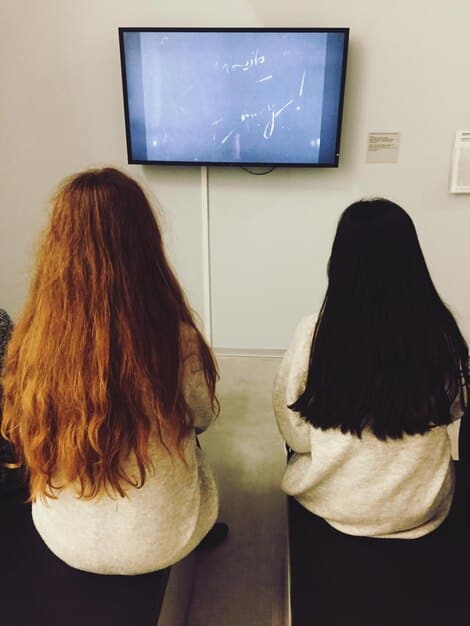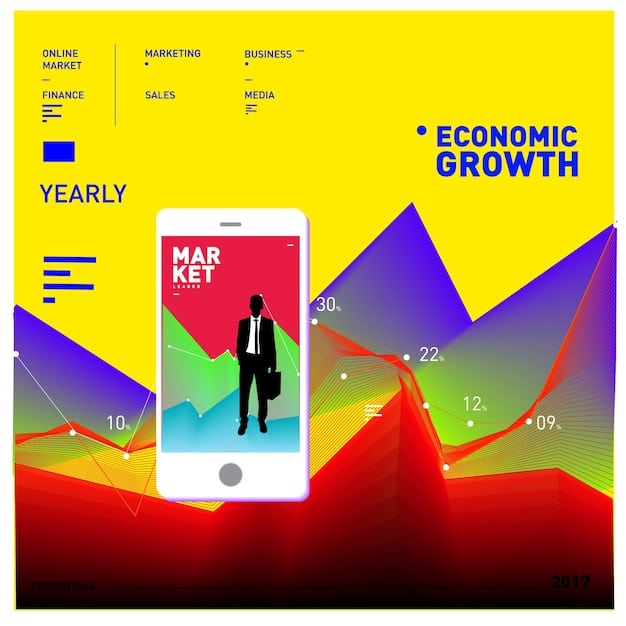The Impact of Social Media on Network TV Ratings: TikTok’s Boost Effect

The impact of social media on network TV ratings is significant, particularly with platforms like TikTok driving potential viewership increases. Trends originating on TikTok can translate into a measurable boost for network television shows, highlighting the evolving relationship between digital platforms and traditional media.
The relationship between social media and network television is constantly evolving, and the impact of social media on network TV ratings is becoming increasingly clear. Can a viral trend on TikTok really translate into an 8% boost in viewership? Let’s explore how these digital waves are reshaping the landscape of traditional television.
Understanding the Symbiotic Relationship Between Social Media and Network TV
Network television, once the undisputed king of entertainment, now shares the throne with social media. This relationship, while sometimes uneasy, has created a fascinating dynamic. Social media platforms, particularly TikTok, are becoming powerful drivers of viewership for network TV.
The digital age has fundamentally altered how audiences discover and engage with content. Social media’s pervasive influence is undeniable, and network television is learning to leverage these platforms to its advantage. Let’s delve into this new era of cross-promotion and audience cultivation.
The Rise of Social TV
Social TV is the phenomenon of people sharing their TV viewing experiences on social media. This trend has transformed passive viewing into an interactive, social event. Networks are now paying close attention to these conversations.
By monitoring hashtags, comments, and trends related to their shows, networks gain valuable insights into audience preferences and sentiment. This feedback loop allows them to adjust their strategies and create content that resonates with viewers.
- Real-Time Engagement: Social media allows viewers to engage with shows in real-time, creating a sense of community.
- Amplified Promotion: Viral moments and trending hashtags can significantly boost a show’s visibility.
- Audience Feedback: Networks can gather immediate feedback on episodes and storylines.
Social TV has become an essential tool for networks seeking to stay relevant and engage with today’s audiences. By embracing social media, networks can foster a deeper connection with viewers and build lasting relationships.
In conclusion, the symbiotic relationship between social media and network TV is reshaping the entertainment landscape. Networks are increasingly relying on social platforms to drive viewership, gather feedback, and foster audience engagement, demonstrating the profound impact of social media on network TV ratings.

TikTok’s Influence on TV Show Discovery and Viewership
TikTok, with its massive user base and viral potential, has emerged as a key player in driving viewership for network TV shows. Short, engaging videos can quickly capture attention and spark interest in a television series.
The app’s algorithm is designed to surface content that resonates with users, making it an ideal platform for promoting TV shows to a wide audience. Networks are increasingly leveraging TikTok to reach new viewers and reignite interest in existing series.
Viral Challenges and TV Show Promotion
Viral challenges are a popular trend on TikTok, and networks are harnessing their power to promote TV shows. By creating challenges related to a show’s theme, characters, or music, networks can encourage user-generated content and generate buzz.
These challenges often feature catchy songs, dance moves, or creative skits, prompting users to participate and share their own versions. The resulting flurry of activity can significantly boost a show’s visibility and drive viewership.
- Increased Awareness: Challenges introduce the show to a wider audience on TikTok.
- User Engagement: Participants become invested in the show’s concept and characters.
- Organic Promotion: User-generated content feels authentic and resonates with viewers.
Viral challenges can be a highly effective way to promote TV shows on TikTok, driving engagement and ultimately boosting viewership. By tapping into the creativity and enthusiasm of TikTok users, networks can create a powerful marketing campaign.
Overall, TikTok’s influence on TV show discovery and viewership is undeniable. The platform’s viral potential and massive user base make it an invaluable tool for networks seeking to reach new audiences and boost their ratings by leveraging the impact of social media on network TV ratings.
Measuring the 8% Viewership Boost: Case Studies and Analysis
The claim that TikTok trends can boost viewership by 8% is not just a hypothetical scenario. Several case studies demonstrate the tangible impact of social media on network TV ratings.
By analyzing viewership data and social media trends, researchers have identified clear correlations between viral content and increased ratings. These findings highlight the potential of social media to significantly influence audience behavior.
Analyzing Viewership Data
To measure the impact of TikTok trends, researchers often analyze viewership data from Nielsen and other rating agencies. This data provides insights into audience demographics, viewing habits, and overall ratings for specific shows.
By comparing viewership data before and after a TikTok trend goes viral, researchers can assess the direct impact on ratings. This analysis can reveal whether the trend translated into a measurable increase in viewership.
- Pre-Trend vs. Post-Trend Analysis: Comparing viewership before and after a TikTok trend.
- Demographic Analysis: Identifying which demographics are most influenced by TikTok trends.
- Correlation Studies: Establishing a statistical link between TikTok activity and TV ratings.
Analyzing viewership data is crucial for understanding the true impact of TikTok trends on network TV ratings. By carefully examining audience behavior, researchers can quantify the influence of social media and provide valuable insights for network executives. One example could involve analyzing the effect of a specific TikTok trend on the viewership of a new drama series premiere.
In conclusion, measuring the 8% viewership boost requires a rigorous analysis of viewership data and social media trends. Case studies and correlation studies provide evidence of the tangible influence of TikTok on network TV ratings, solidifying the impact of social media on network TV ratings.

Addressing the Skepticism: Is the Correlation Causation?
While the correlation between TikTok trends and increased TV ratings is evident, some skeptics question whether this relationship is truly causal. It’s important to consider potential confounding factors that may influence viewership.
Factors such as seasonality, competing shows, and marketing campaigns can all impact TV ratings. It’s crucial to isolate the specific influence of TikTok trends to determine whether they are directly responsible for the observed increase in viewership.
Eliminating Confounding Factors
To establish causation, researchers must eliminate potential confounding factors. This can be achieved through careful experimental design and statistical analysis.
By controlling for other variables, researchers can isolate the specific impact of TikTok trends on TV ratings. This rigorous approach helps to address skepticism and provide stronger evidence of causation.
- Control Groups: Comparing shows with and without TikTok promotion.
- Statistical Modeling: Controlling for factors like seasonality and competing shows.
- A/B Testing: Experimenting with different TikTok promotion strategies.
Addressing the skepticism surrounding the correlation between TikTok trends and TV ratings requires a rigorous and scientific approach. By eliminating confounding factors and conducting careful analysis, researchers can strengthen the evidence of causation and solidify the impact of social media on network TV ratings.
In summary, it is important to determine that correlation does not equal causation. By addressing potential confounding factors, a clearer picture can be formed about how TikTok Trends Boost Viewership.
Strategies for Networks to Effectively Leverage TikTok Trends
For network TV shows, the key is creating engaging content that resonates with TikTok’s audience. Understanding the platform’s culture and algorithm is essential for maximizing reach and impact.
Partnering with TikTok influencers, creating viral challenges, and producing short, attention-grabbing videos are all effective strategies for leveraging the platform’s potential. Networks that embrace these tactics can significantly boost their viewership and engagement.
Collaborating with TikTok Influencers
TikTok influencers have a dedicated following and a deep understanding of the platform’s trends. Collaborating with these influencers can be a highly effective way to promote TV shows to a targeted audience.
Influencers can create engaging content that highlights the show’s key themes, characters, and storylines. Their endorsement can generate buzz and drive viewership among their followers.
- Targeted Reach: Influencers can reach specific demographics on TikTok.
- Authentic Endorsement: Influencer content feels genuine and relatable.
- Creative Content: Influencers can create engaging videos that capture attention.
Collaborating with TikTok influencers is a powerful way for networks to leverage the platform’s potential. Their reach and expertise can help to promote TV shows to a wider audience and drive viewership using the impact of social media on network TV ratings.
In light of this, there are clear strategies that allow networks to leverage any potential TikTok trends. Using these techniques, one can potentially increase their viewership.
The Future of Network TV: Adapting to a Social Media-Driven World
The future of network television will be shaped by its ability to adapt to the changing media landscape. Embracing social media and integrating it into their marketing strategies will be crucial for survival.
Networks that can successfully leverage platforms like TikTok to reach new audiences and engage with existing fans will be well-positioned to thrive in the digital age by using the impact of social media on network TV ratings.
The Integration of Social Media and TV Content
The lines between social media and TV content are becoming increasingly blurred. Networks are now incorporating social media elements directly into their shows, creating a more interactive and engaging experience for viewers.
Live tweeting, behind-the-scenes content, and interactive polls are just a few examples of how networks are integrating social media into their programming. This integration fosters a deeper connection with viewers and encourages real-time engagement.
- Live Tweeting: Encouraging viewers to tweet during episodes.
- Behind-the-Scenes Content: Sharing exclusive content on social media.
- Interactive Polls: Engaging viewers with polls and quizzes related to the show.
The integration of social media and TV content is essential for networks seeking to stay relevant and engage with today’s audiences. By embracing these tactics, networks can create a more immersive viewing experience and foster a deeper connection with fans. This will allow the impact of social media on network TV ratings to continue increasing.
Therefore, the future of network TV depends on adapting to a social media driven world. TV will continue to change as more and more TikTok trends emerge.
| Key Point | Brief Description |
|---|---|
| 📈 Measuring Impact | Analyzing viewership data to quantify TikTok’s influence. |
| 🤝 Collaborations | Partnering with TikTok influencers for wider reach. |
| 🎬 Viral Challenges | Creating user-generated content to boost show awareness. |
| 🌐 Integration | Blending social media elements with TV content for engagement. |
Frequently Asked Questions
TikTok drives TV ratings through viral trends, challenges, and influencer collaborations, increasing show awareness and viewership.
Influencers create engaging content, endorse shows, and drive viewership among their followers, thereby reaching a wider audience.
Case studies show that strategic TikTok campaigns can correlate with significant, sometimes even 8%, increases in TV ratings.
Networks should create engaging content, partner with influencers, and integrate social elements into TV programming to maximize impact.
As social media evolves, its impact on TV ratings will likely persist, requiring networks to adapt to stay relevant and competitive.
Conclusion
In conclusion, the relationship between social media, particularly TikTok, and network TV ratings is undeniable. Can TikTok trends boost viewership? The data suggests a resounding yes. Networks that embrace these trends and strategically leverage social media will be best positioned to thrive in the ever-evolving media landscape, seeing the impact of social media on network TV ratings grow.





